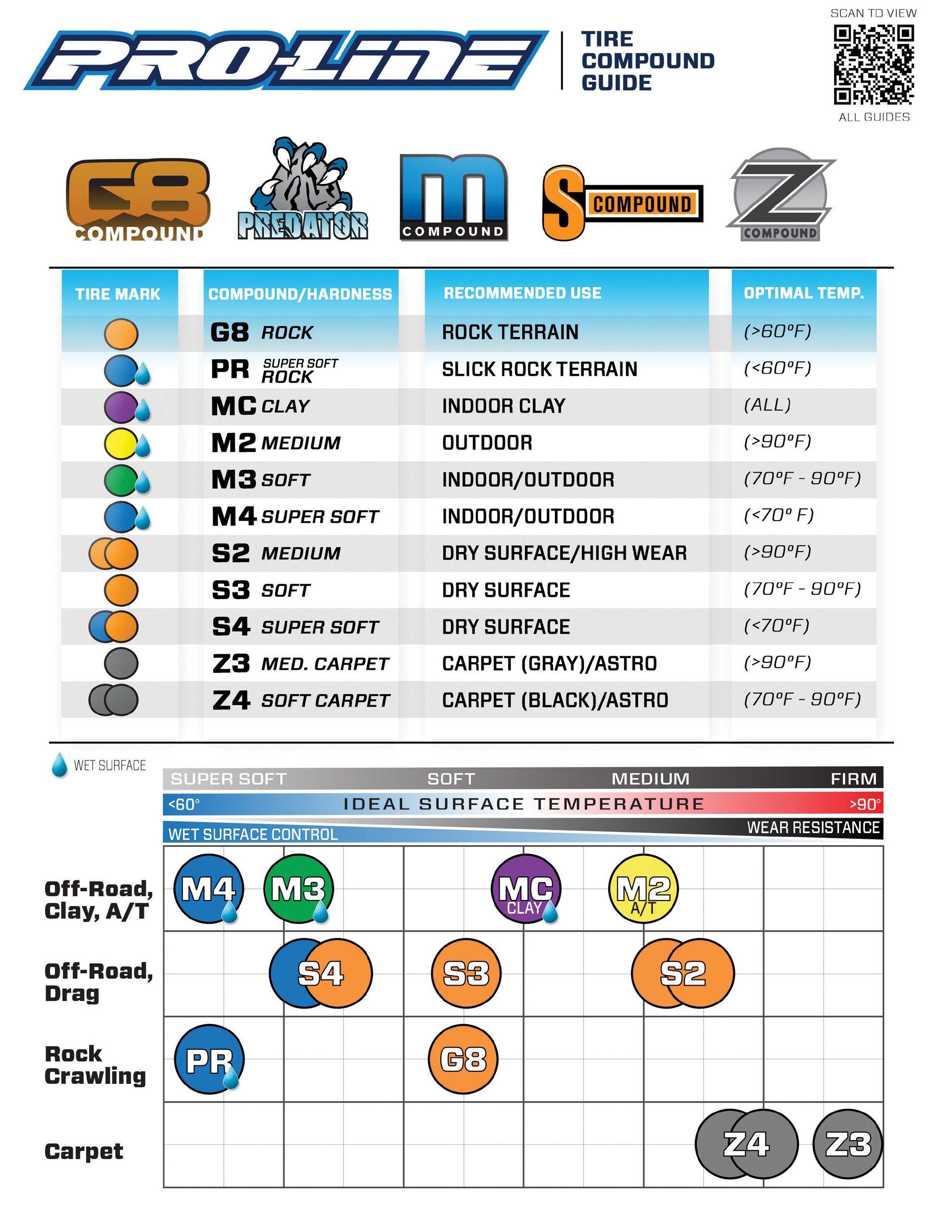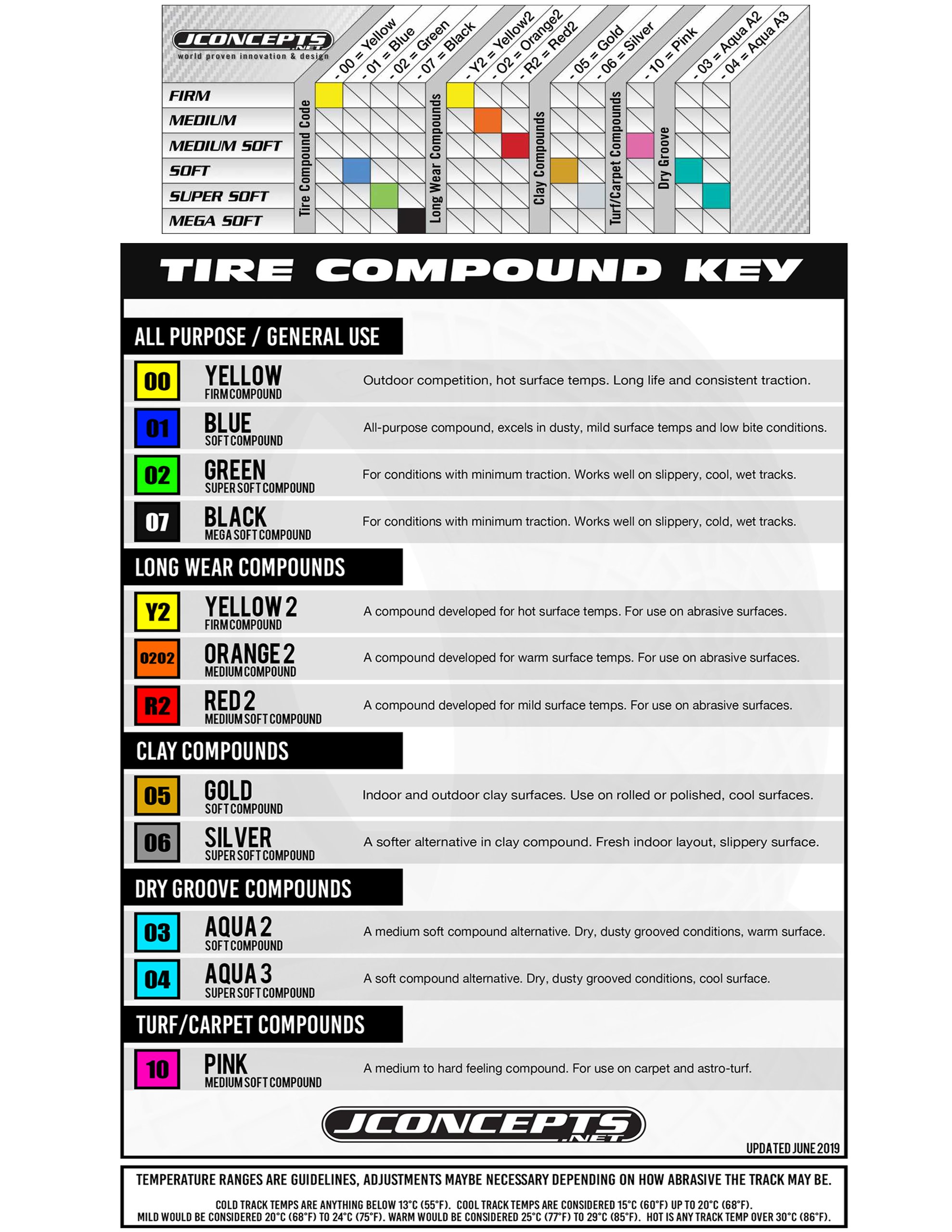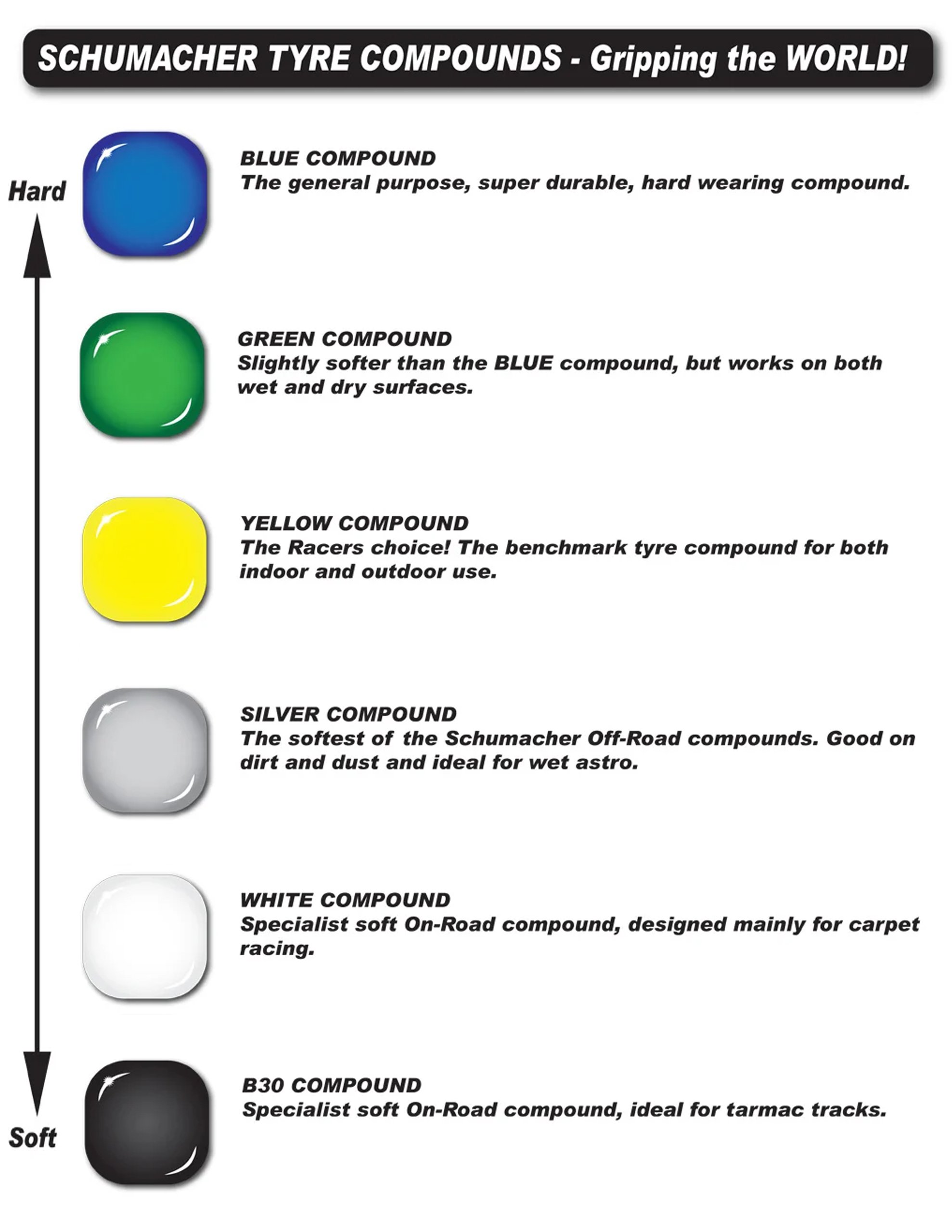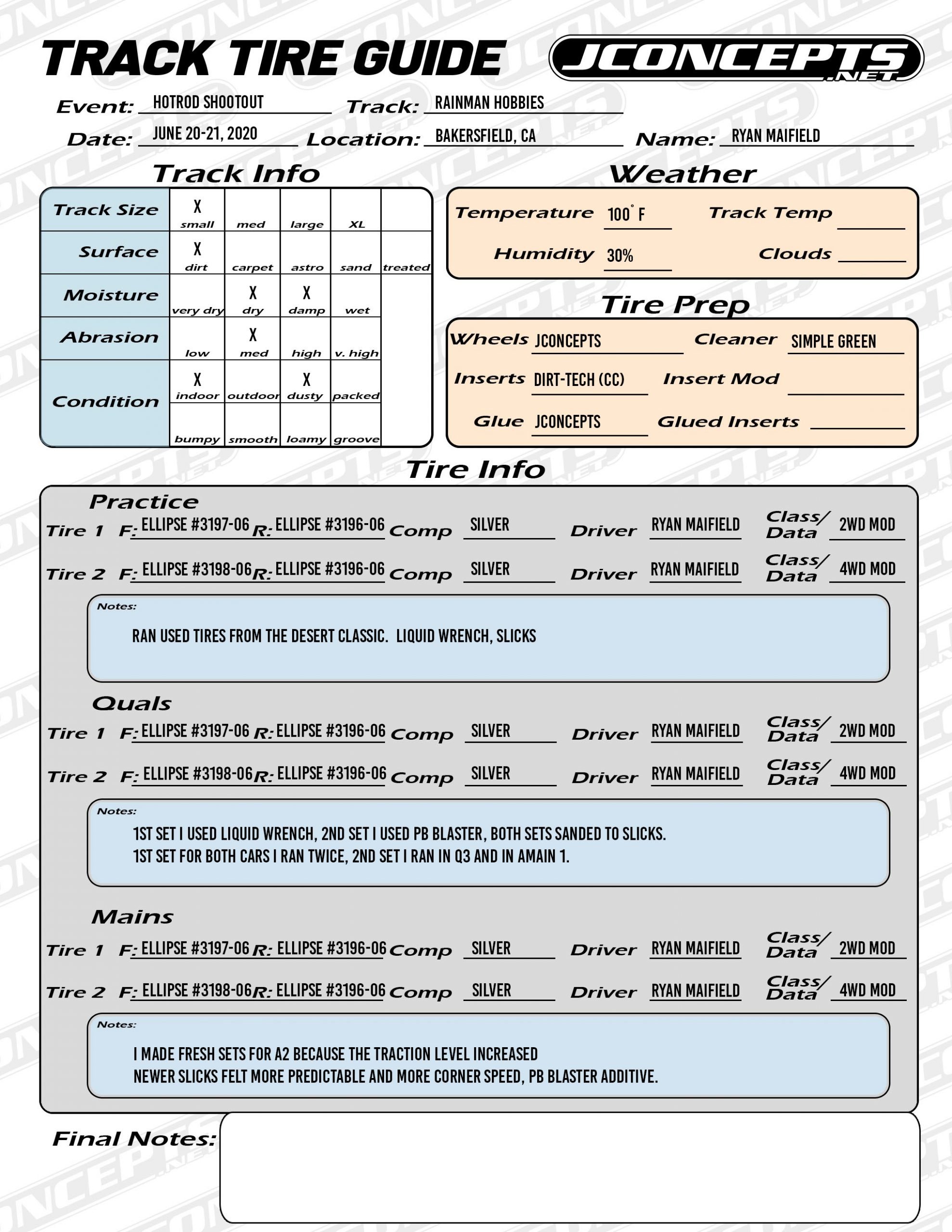Choosing the Right Off-Road RC Tires and Wheels
It only makes sense that your new RC car or truck would include wheels and tires, right? It’s tough to roll without them, and in the full-scale world, no one checks to make sure their new Chevy will arrive with wheels on it. But as is often the case, RC is a little different. Most RC car and truck kits include wheels and tires, but many premium-performance and competition models do not. Why not? Because customers for these models prefer to choose their rubber rather than pay extra for included tires that may not be ideal for their track or terrain. If you’re not sure what your model needs—or you’ve already got tires and wheels, but you want something better suited to your driving style and terrain—then this is the article for you. We’ll cover everything you need to know about choosing the right off-road RC tires and wheels.
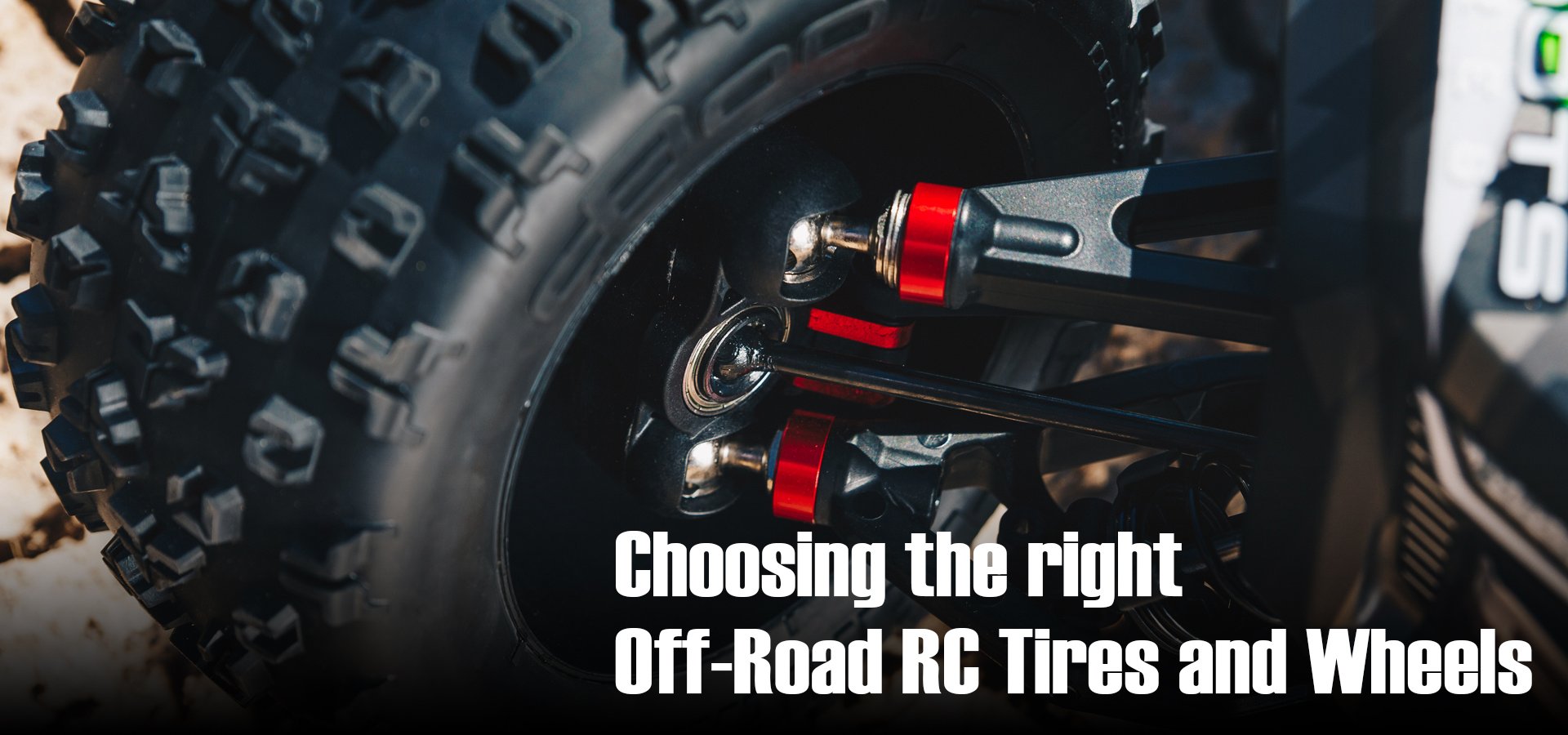
How Tire and Wheel Size is Measured
Wheel and tire size is stated in inches and refers to the inside diameter of the tire—and the outside diameter of the wheel. So, for example, a 2.2” wheel has an outer diameter of 2.2 inches, and a 2.2” tire has an inside diameter of 2.2 inches. Since these measurements are the same, we know the tire and wheel will fit each other. And we know a 1.55” tire would be too small for a 2.2” wheel, and a 2.8” tire would be too big.
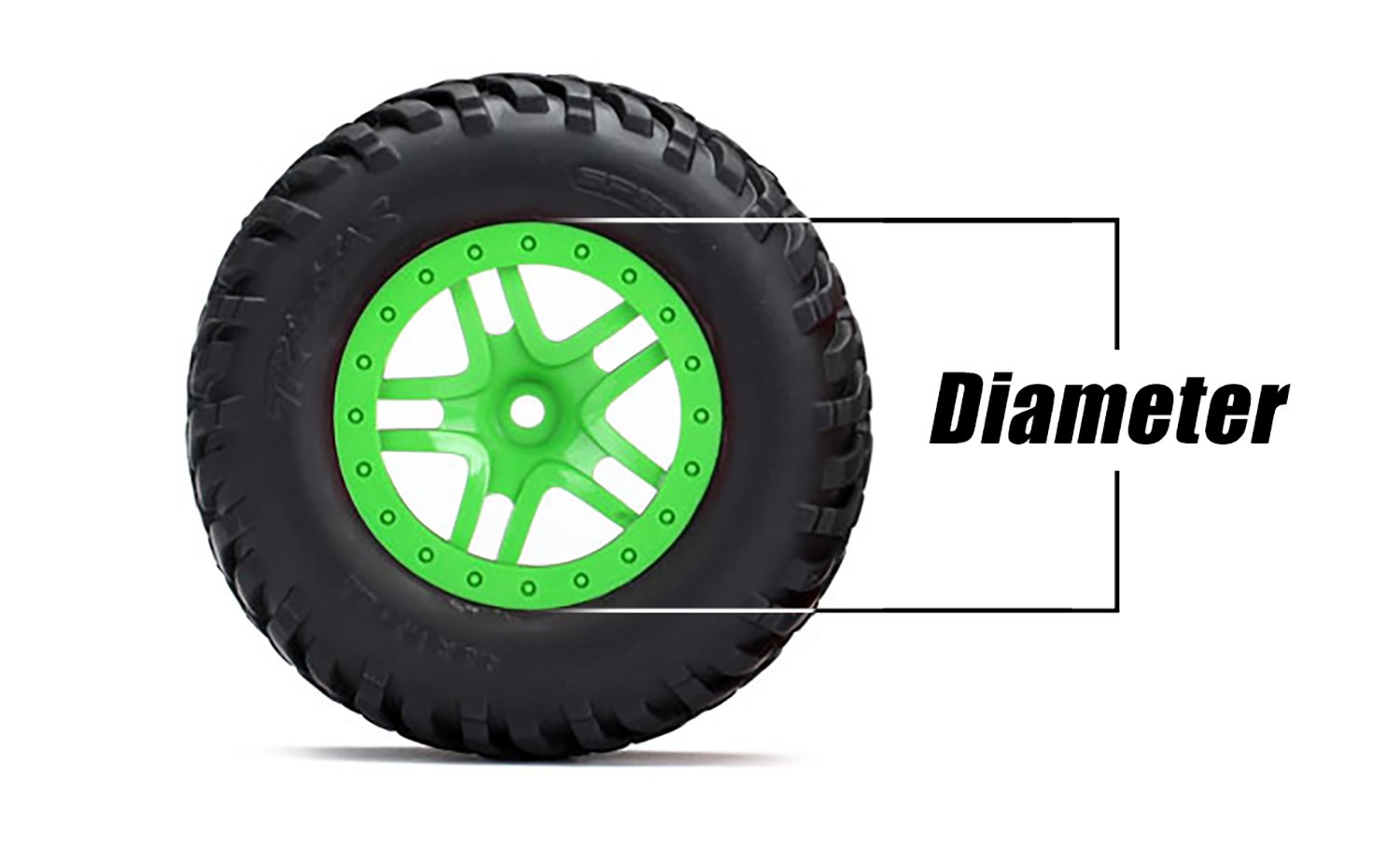
Tire and wheel sizes refer to the outside diameter of the wheel and the inside diameter of the tire.

Note that tires in the same size category may vary widely in outside diameter. For example, both tires in this illustration are 2.2” in size, even though one has taller sidewalls and a larger diameter. If you need to know the tire’s outside diameter, check its specs at the manufacturer’s website or here at AMain Hobbies.
What Fits?
First and foremost, you want to get the correct size and type off-road RC wheels that fit your model and tires designed to fit those wheels. The goof-proof way to get this right is to check your kit’s manual, which will tell you what type of wheel you need and likely include the item numbers for wheels the manufacturer offers for your model. The manufacturer web page for your model should also list what’s required to complete the kit. Or simply look up your model here at AMain Hobbies—you’ll find a Needed to Complete listing that shows all the items required to turn your kit into a fully-functioning vehicle ready for the track or trail.

Sport and competition buggies most commonly use 2.2” wheels, but nearly all sport trucks use larger 2.8” wheels—as shown here with a Traxxas Bandit and Rustler.
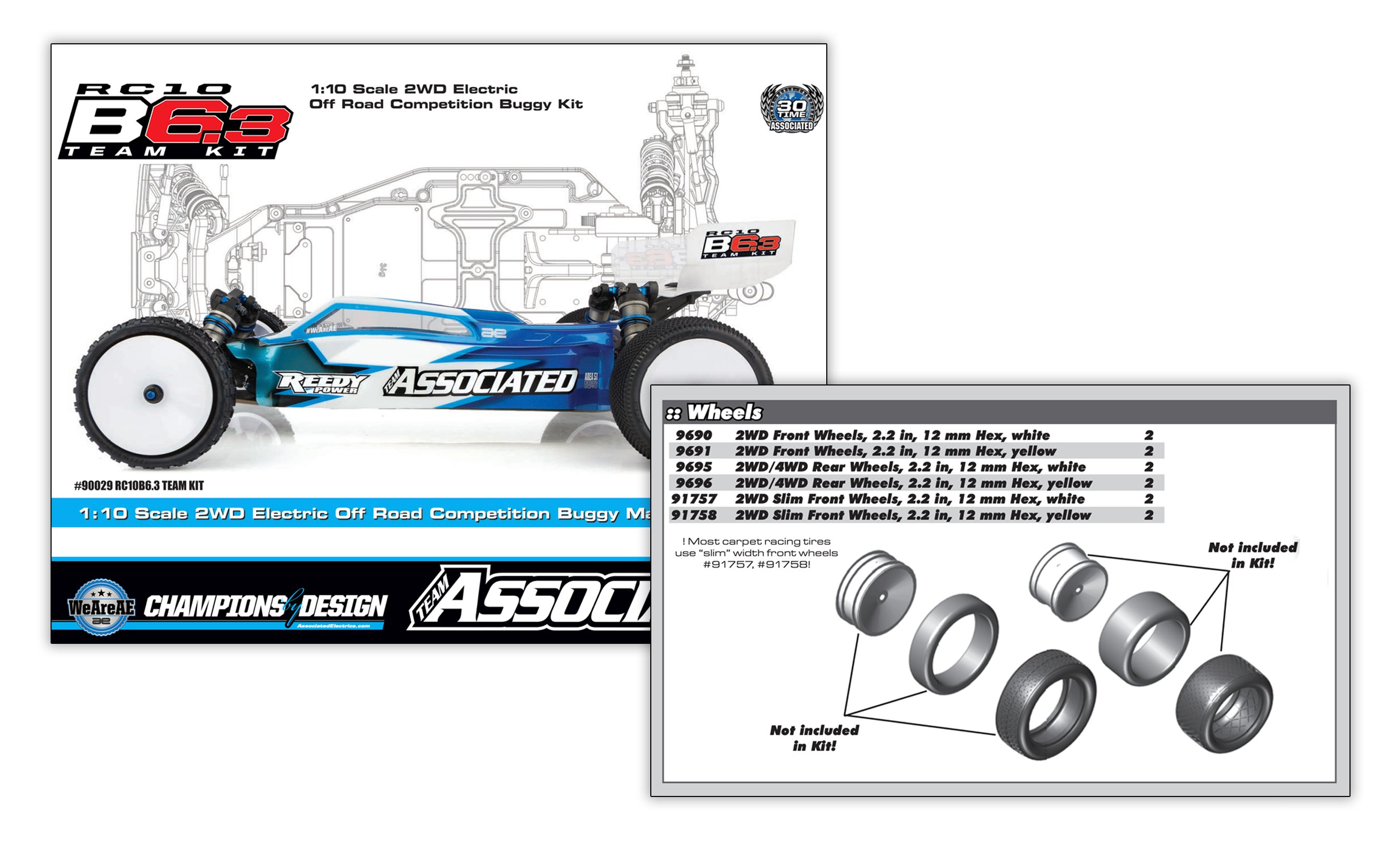
Competition kits like this Team Associated RC10B6.3 typically don’t include tires or wheels, but the manual will list the wheel options for the car.
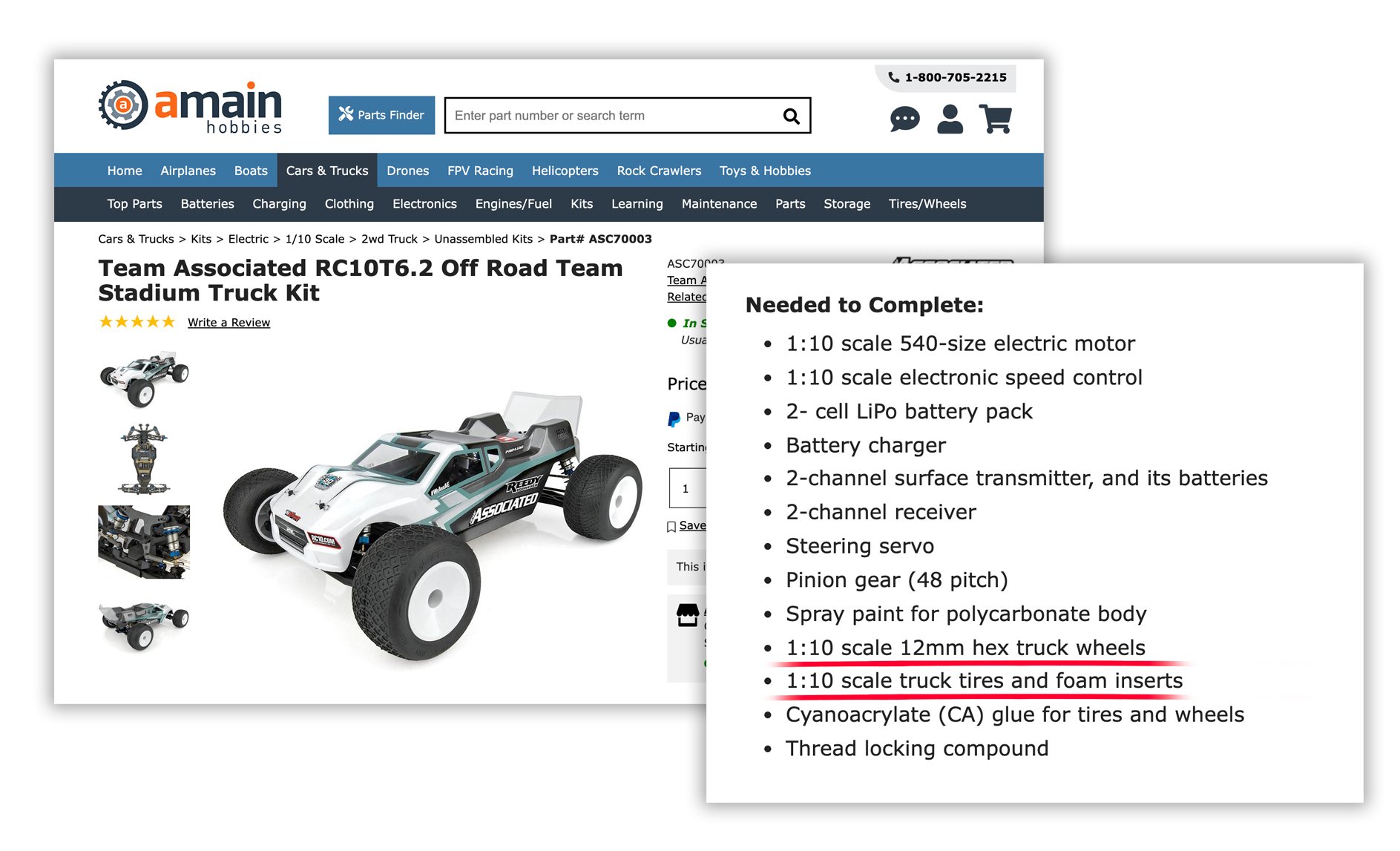
You can also find out if your car or truck requires wheels and tires and which type in the “Needed to Complete” section for your model here at AMain Hobbies—shown: Team Associated RC10T6.2.
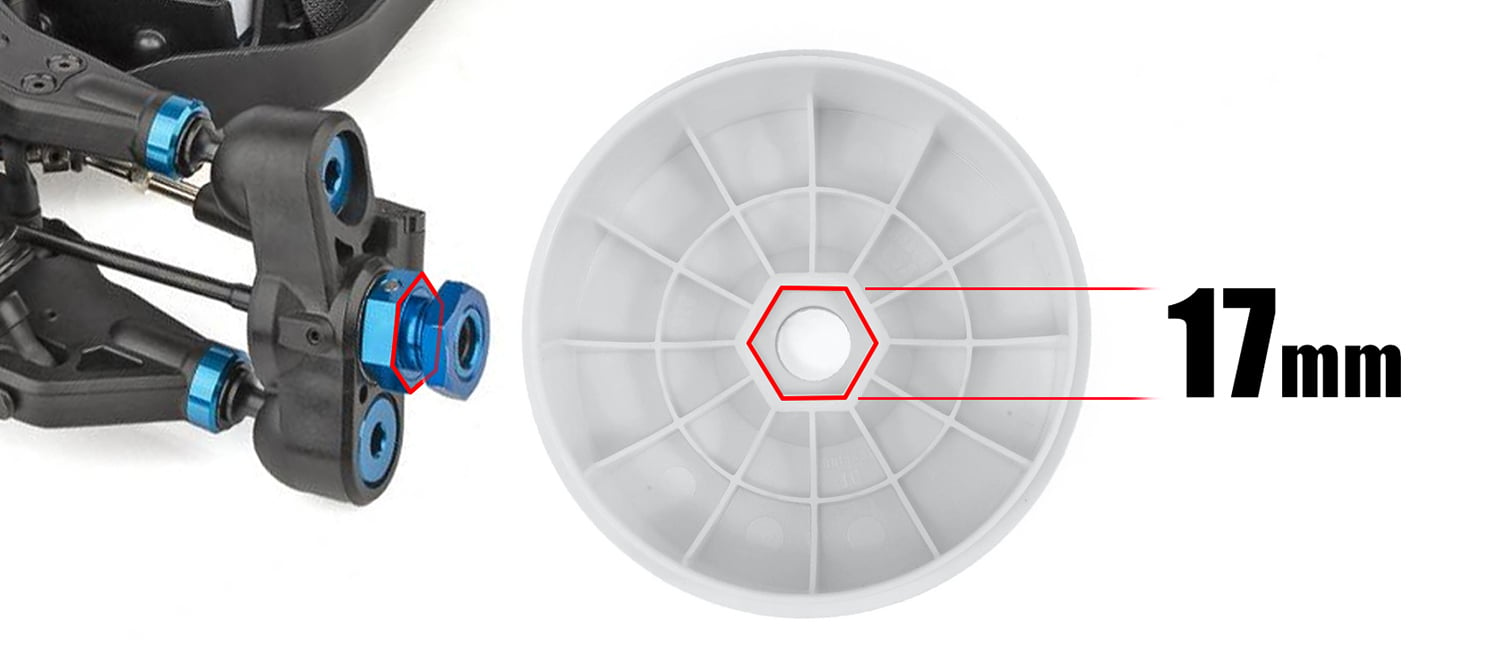
Another consideration for wheel fit is hex-hub size. Virtually all 1/10 scale models use 12mm hexes, and 1/8 scale models have 17mm hexes (as shown). Monster trucks and large-scale models may use up to a 24mm hex—check your manual or measure the hex yourself. Hex size is measured from flat side to flat side.
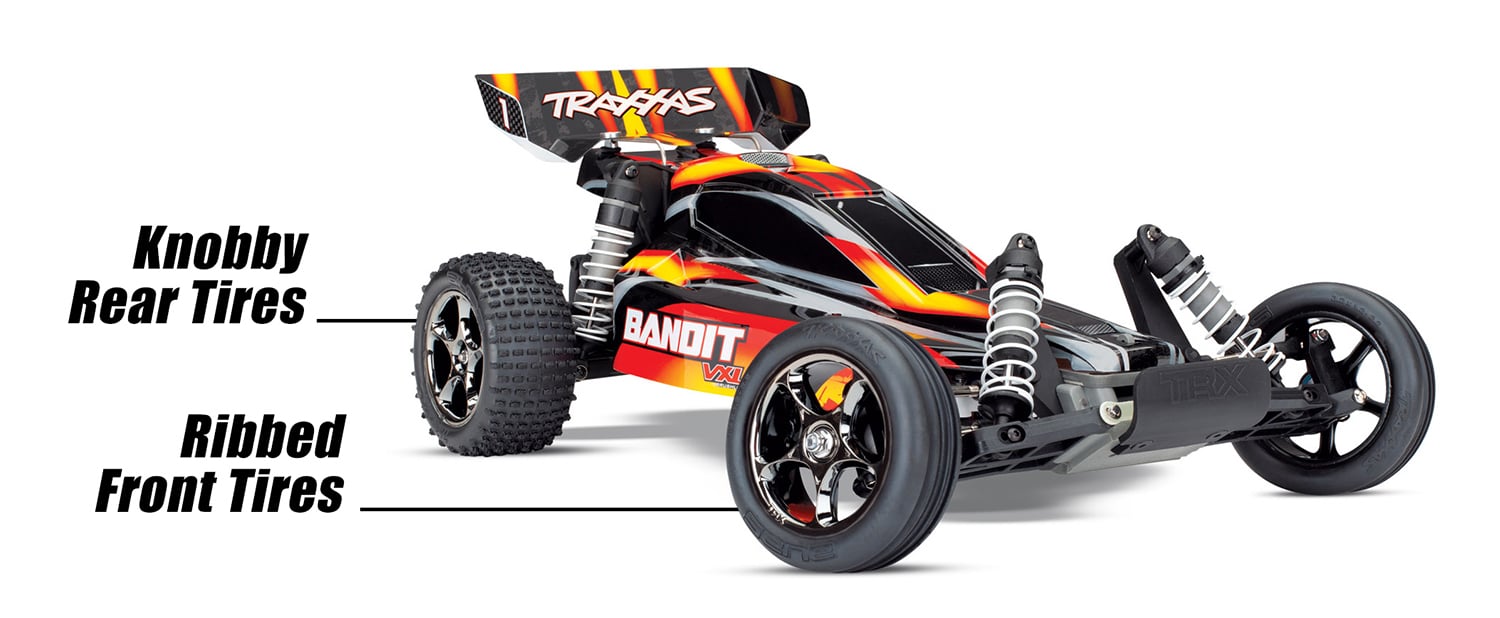
As seen on this Traxxas Bandit, 2WD buggies use a front tread design optimized for steering traction instead of power-transmitting capability since the front wheels are unpowered. Ribbed designs are common.

When equipping a 1/10 scale 4WD buggy like this Team Associated RC10B74.1, identical front and rear treads are fitted, but the front wheels and tires are narrower—but not as narrow as 2WD front wheels. So when shopping 1/10 scale front buggy wheels and tires, make sure you note whether the size is “2WD front” or “4WD front.”
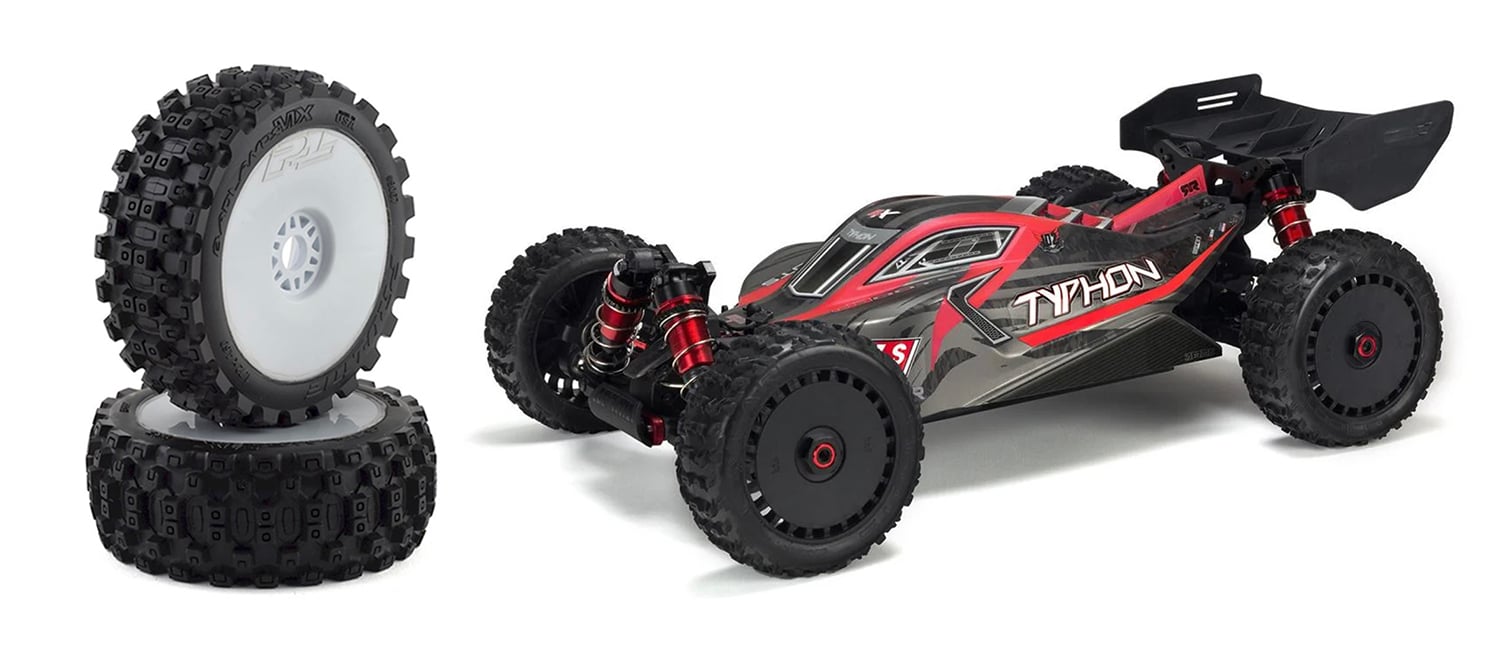
1/8 scale buggies like this Arrma Typhon use the same size tires and wheels, front and rear. The standard size is a 3.3” wheel with a 17mm hex. Shown: Pro-Line Badlands tires on Velocity wheels.
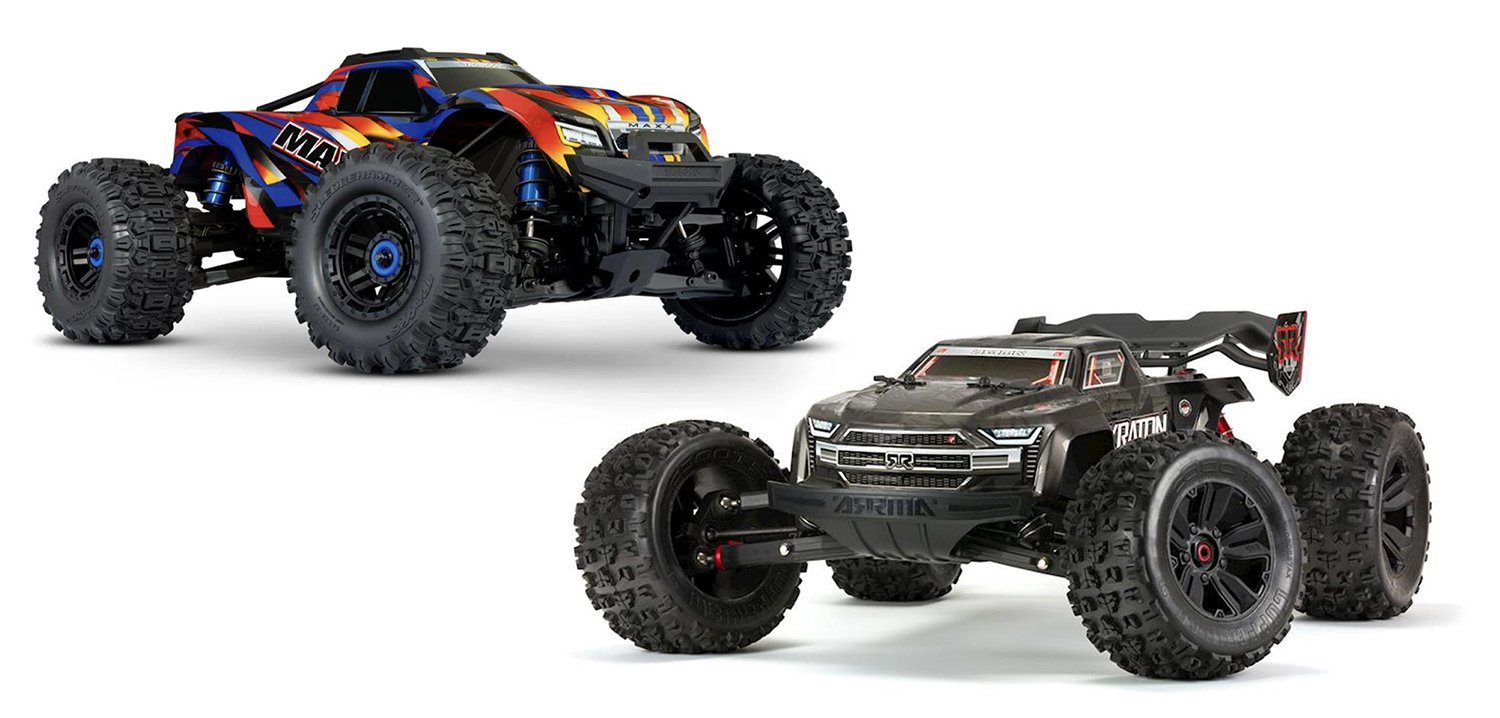
1/10 scale monster trucks generally wear 2.8” wheels with 12 or 14mm hexes, but 1/8 scale monster trucks and truggies like the Traxxas Maxx and Arrma Kraton use 3.8” wheels and tires with 17mm hexes.

1/10 trail trucks most commonly use 1.9” wheels and tires, but 2.2” is common for models of rock racers, like the Axial Bomber. Some trail trucks use 1.55” wheels for more realistic proportions, like the Element Enduro Knightrunner seen here. Depending on your model, you may be able to fit larger wheels and tires onto your truck. For example, Traxxas offers a lift kit for the TRX-4 series trucks so they can accept 2.2” wheels and tires without interference issues.
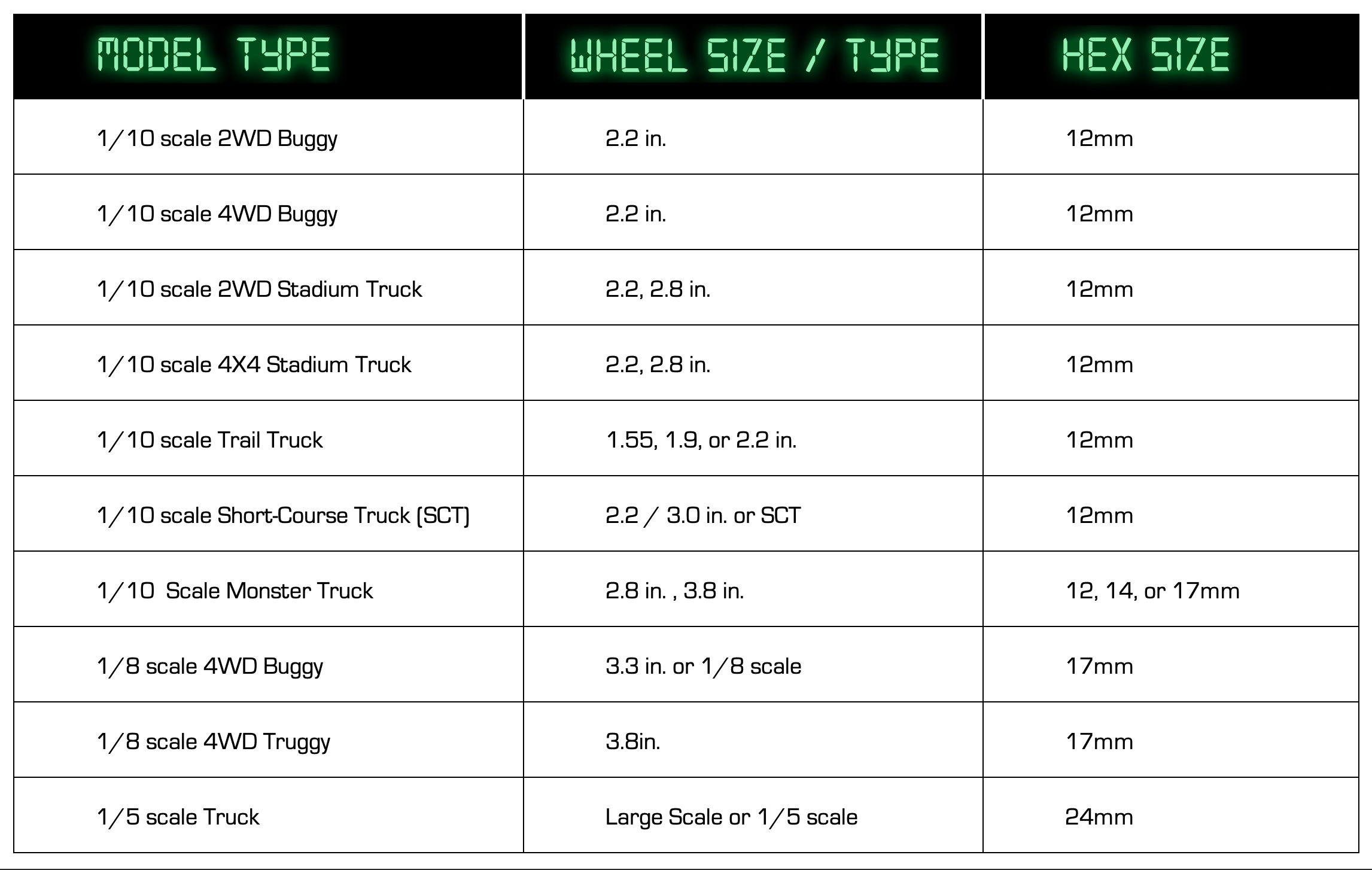
Most car and truck wheel sizes are described simply as the model scale, type, and size in inches. For example, “1/10 2WD buggy 2.2 inch.”
Choosing a Tread Design
For fun-running, you can just choose whatever you think looks cool (and fits, of course) and go nuts. But if you’d like to get maximum traction and handling benefit, there are some things to keep in mind besides style.
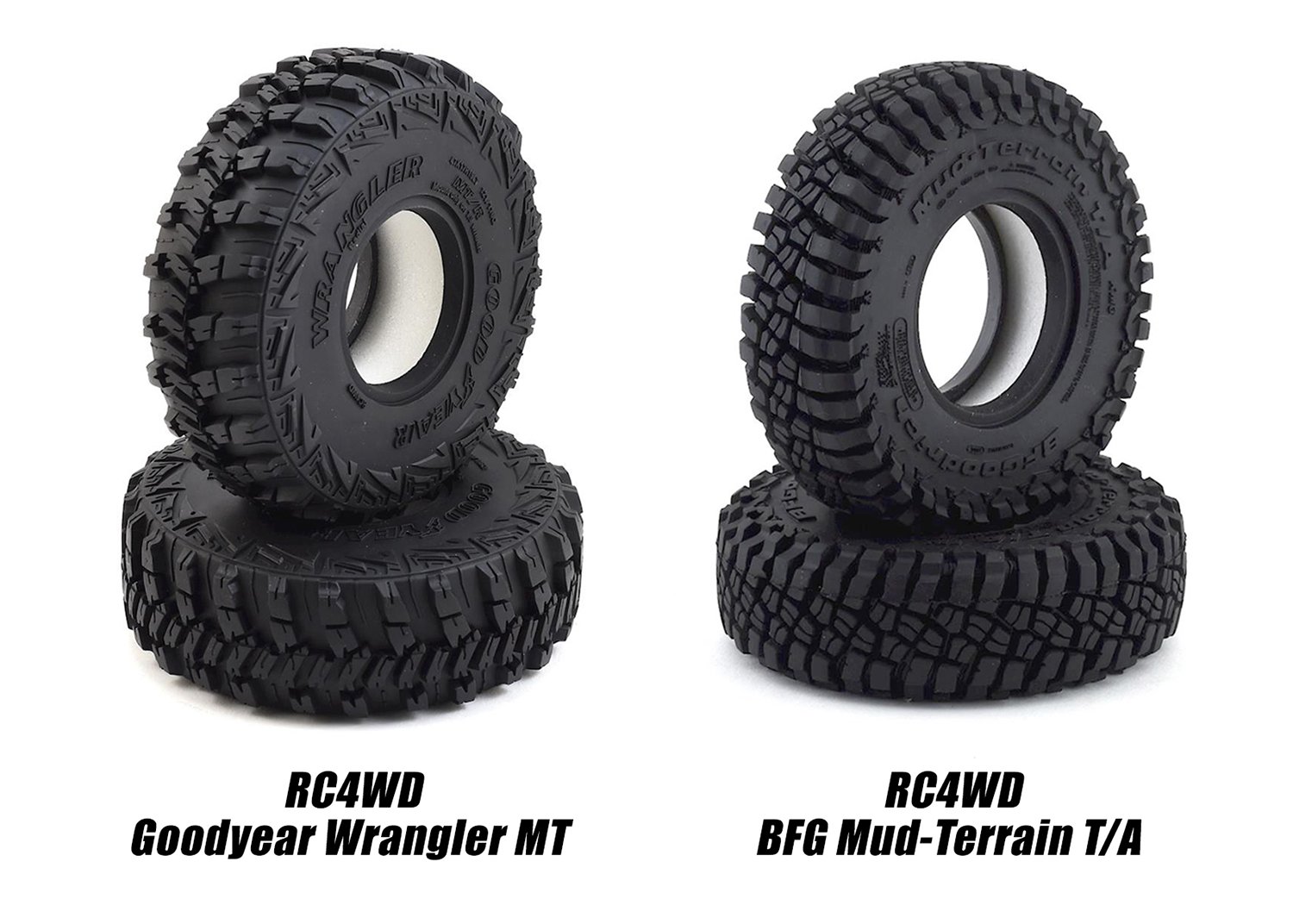
A tire design with larger, more widely-spaced tread elements like the RC4WD Wrangler MT will give a better grip in loose, soft conditions like churned-up dirt or sand and less prone to clogging in mud or snow. Likewise, the finer tread of the Mud-Terrain T/A replica should grip better and wear longer on harder-packed surfaces and rocks.

Knobbies look cool, but if your off-roader primarily sees street action, you’ll get more grip, better handling, and longer life out of slick or road-tread tires. For example, the JConcepts G-Locs and Pro-Line Street Fighters have fairly deep treads, so they still grip on hard-packed dirt, while the Pro-Line Prime is a pure hard-surface tire.
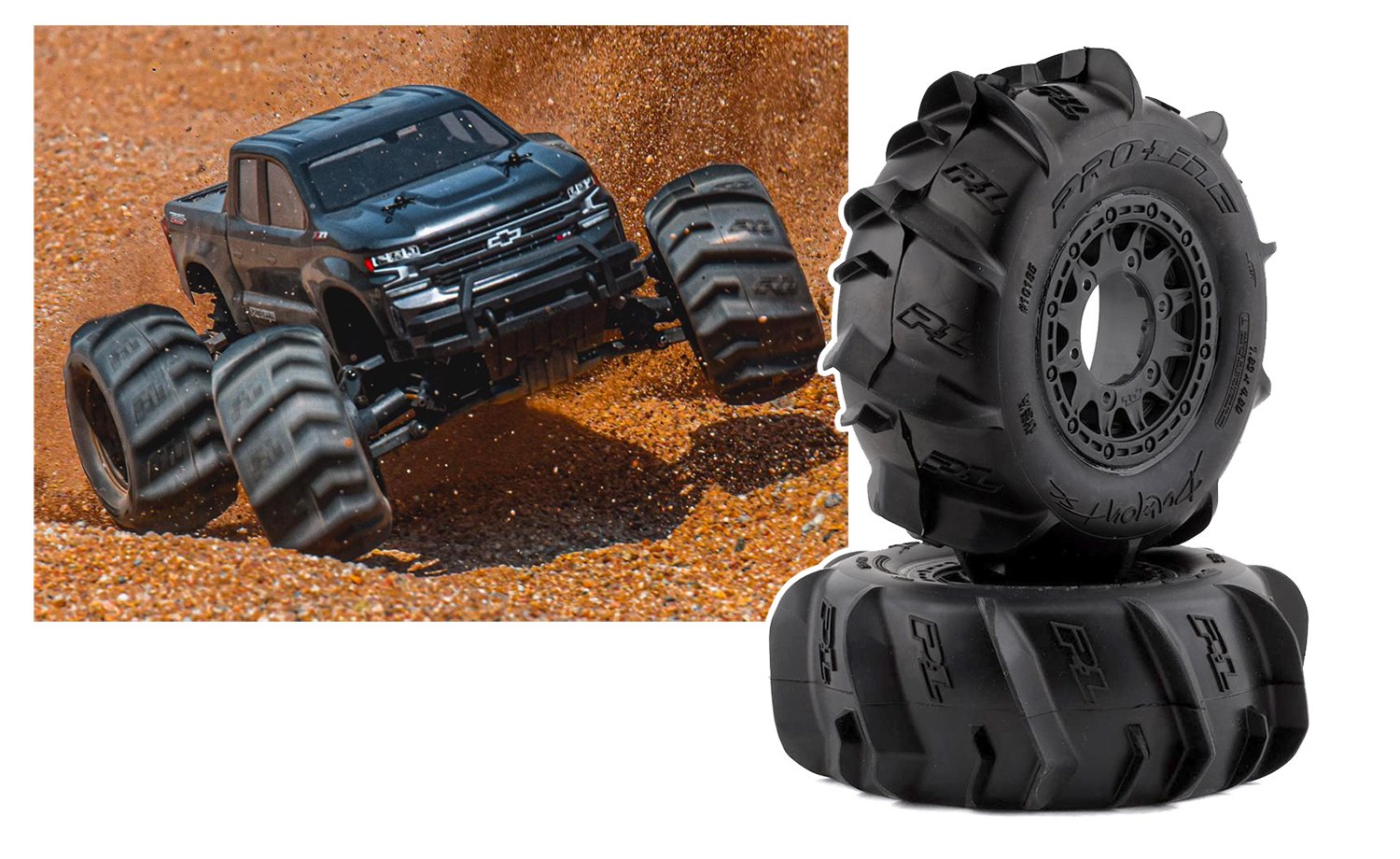
For soft sand, snow, and mud, you can’t beat a set of paddle tires. Pro-Line’s Dumont design is pictured, which you can get in 2.8”, 3.8”, and SCT sizes.
Going Big? You’ll Need to Re-Gear
If your new tires are about the same diameter as what your model came with, you don’t have to worry about re-gearing to compensate for a larger or smaller tire. But if your new tires represent a big jump in diameter—for example, the one-inch jump from a Traxxas Rustler 4X4’s stock Talon EXT tire to the optional Sledgehammer tread—you’ll definitely need to install a pinion gear that’s two or three teeth smaller. Here’s why:
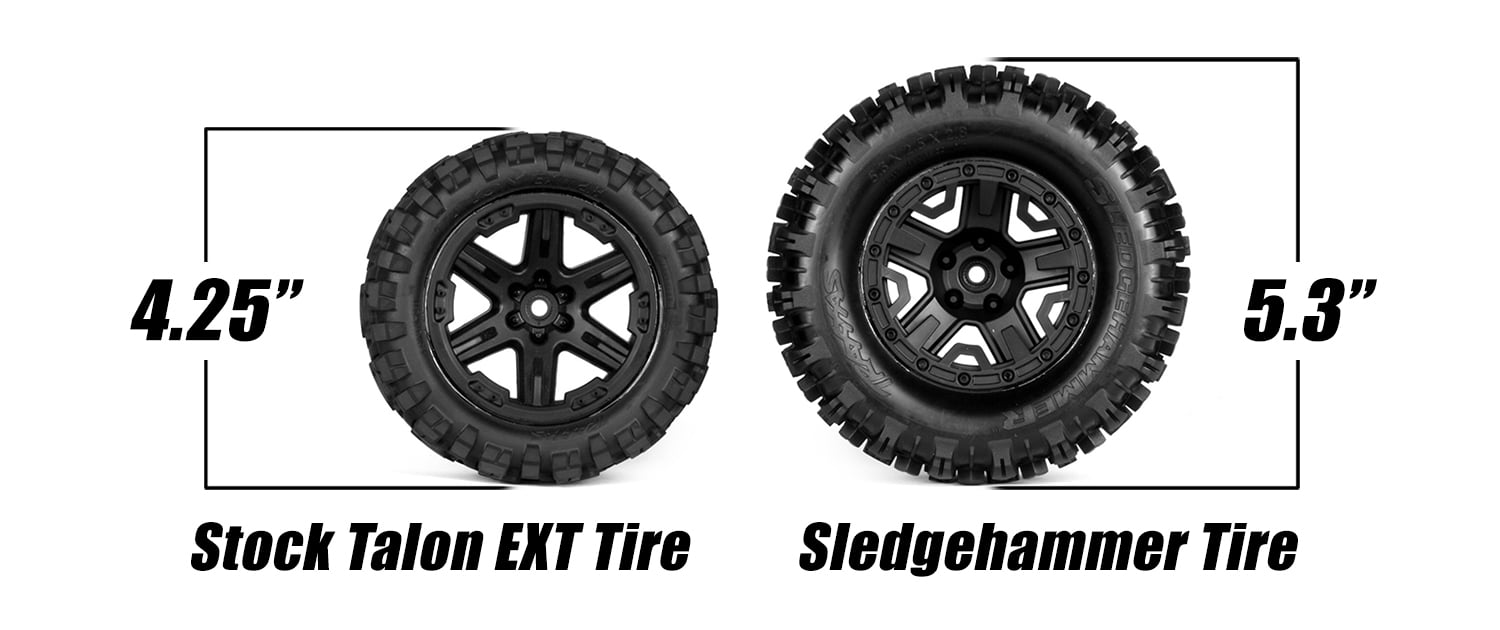
As you can see, the optional Sledgehammer tire is much larger in diameter than the stock Talon EXT. That larger diameter means the Sledgehammer also has a larger circumference and will roll farther with each revolution than the Talon. If we do the math, the Talon rolls 13.5 inches with each spin of the tire, and the Sledgehammer rolls just over three inches farther: 16.6 inches.

This illustration shows just how much farther the Sledgehammer-equipped Rustler 4X4 rolls after just six tire revolutions. When the motor is spinning at tens of thousands of RPM, the extra distance compounds quickly and really puts a lot of strain on the power system. That reduces performance and leads to overheating and shorter motor life. Installing a smaller pinion will correct for the greater rollout of the bigger tire and keep the powertrain happy.
Pre-Mounted and Unmounted Tires
Competition tires are often sold unmounted, so racers can choose which type of foam inserts to install and use their preferred rims, but pre-mounted versions are available for some of the most popular designs. In addition, multi-terrain and “basher” tires are often available in mounted and unmounted versions. Unless your preferred wheel and tire combination isn’t offered as a pre-mount, it’s best to go with the factory-built wheel and tire combos. You get to skip gluing the tires yourself and potentially goofing it up, and you can’t beat a factory glue job for neatness and strength. You may save a few bucks, too.

A pair of mounted Pro-Line Buckshot 1/8 scale buggy tires will run you $41, so that’s $82 for a set of four.
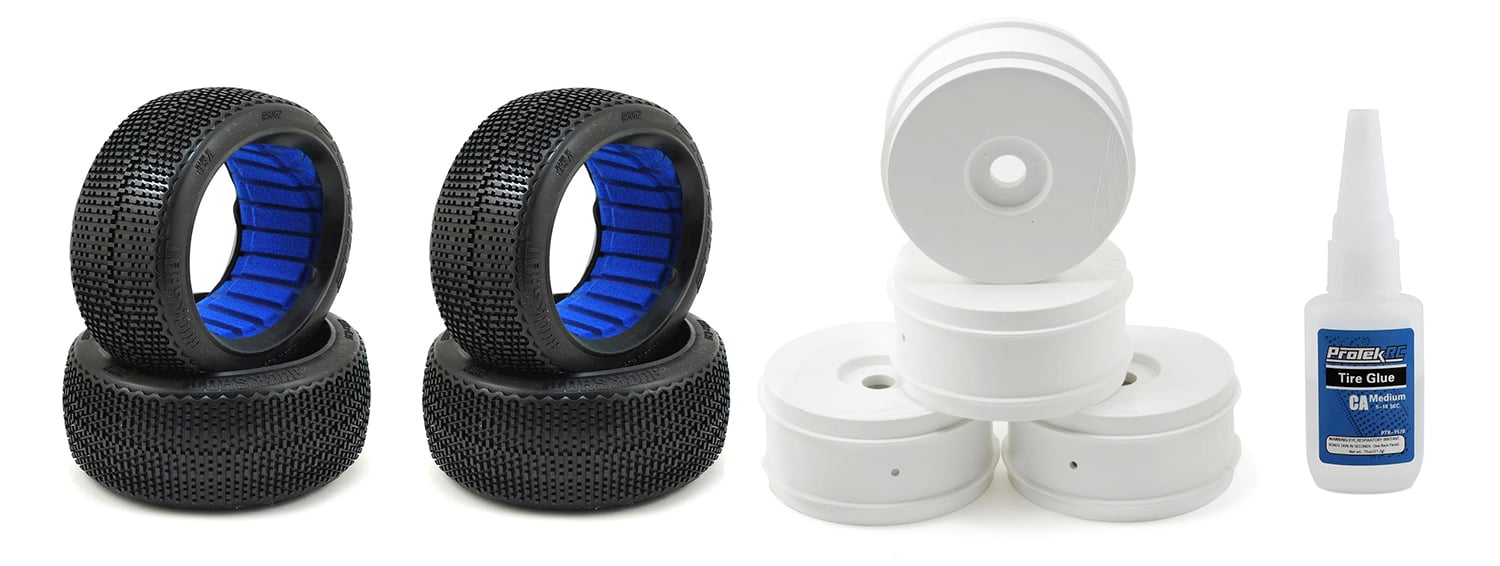
Or, you can get unmounted Buckshots and Velocity wheels for $28 a pair and $23 for a set of four wheels. Add a bottle of ProTek RC tire glue, and you’re looking at $89 and some time at the bench to glue them up.
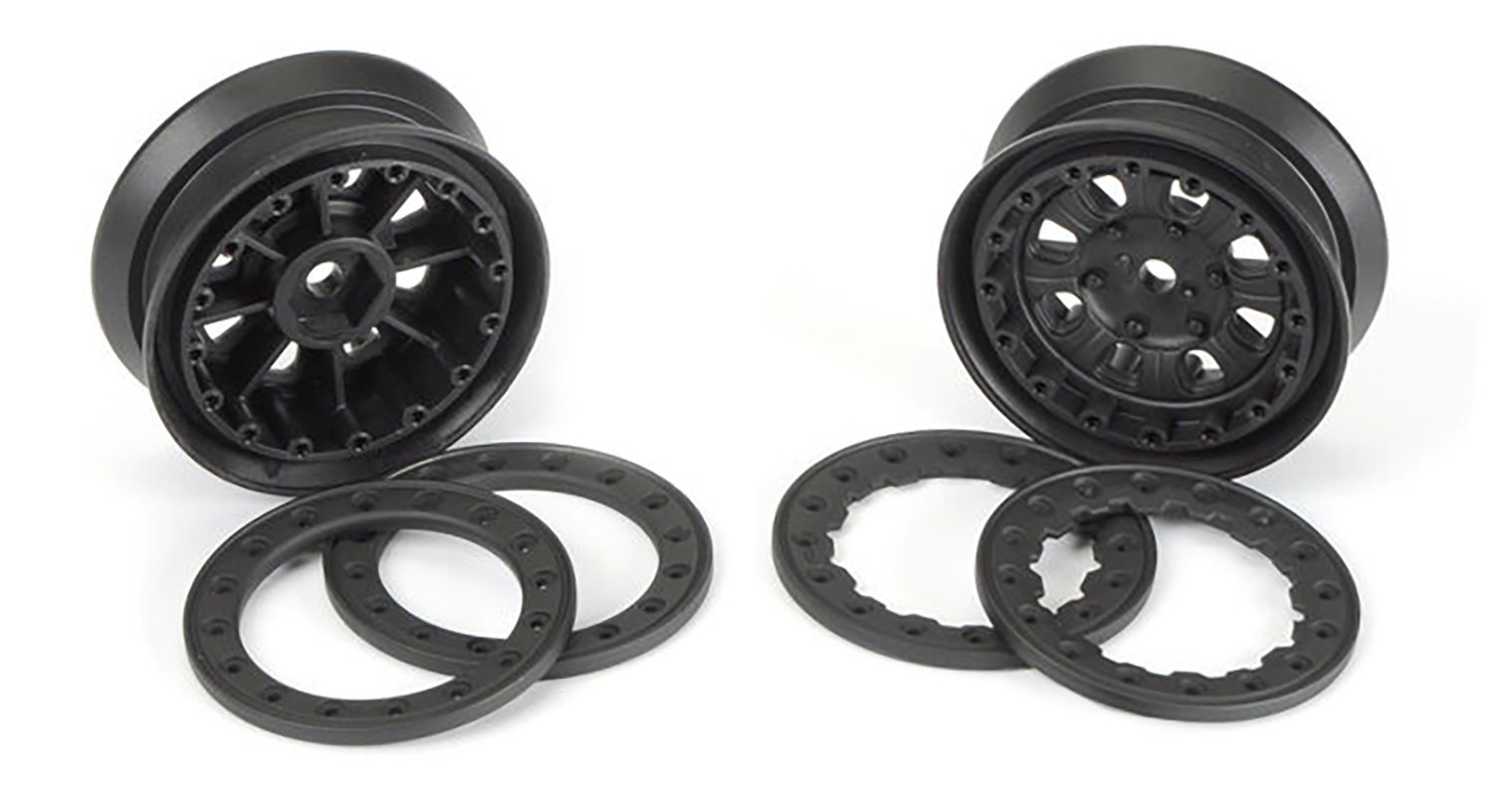
Trail truckers can skip gluing and get beadlock wheels that mechanically hold the tires to the wheels. They look great, allow you to remove the tires anytime you like, and unlike glue-mount rims, you can reuse the wheels over and over. So why don’t all cars and trucks use them? The answer is weight. The extra heft is actually helpful for trail-truck performance, where it’s all about low-RPM driving. However, the excess weight for high-speed, high-RPM models would be bad for handling and put extra strain on the suspension and drivetrain.
Choosing Race Tires
As any racer will tell you, choosing appropriate tires is a huge part of what it takes to win races—or just be competitive. No matter how well your car is set up or how honed your driving skills are, you won’t stay on the lead lap without the right rubber. Thankfully, tire manufacturers offer treads specifically for different terrain types and compounds for specific surfaces. So, the easiest way to choose competitive tires for a given track is to see what’s currently working for the winning drivers. They may disagree on which tire is the very best, but they will point you to two or three treads that work well. If you can’t make it to the track to scope out tire choices in the pits, just give the track shop a call; they’ll give you the lowdown on which tires work for the fast guys.

Manufacturers’ tire compound guides make it easy to zero in on the correct tires for your car and conditions. JConcepts even has event-specific Tire Guides from their team drivers. Follow these links:

As this Pro-Line chart shows, tire compounds vary in firmness (or durometer), wear resistance (softer tires wear faster), and wet-surface traction. Of course, temperature plays a part; the ideal compound for warm-weather racing may be too firm for competition in cooler temps.
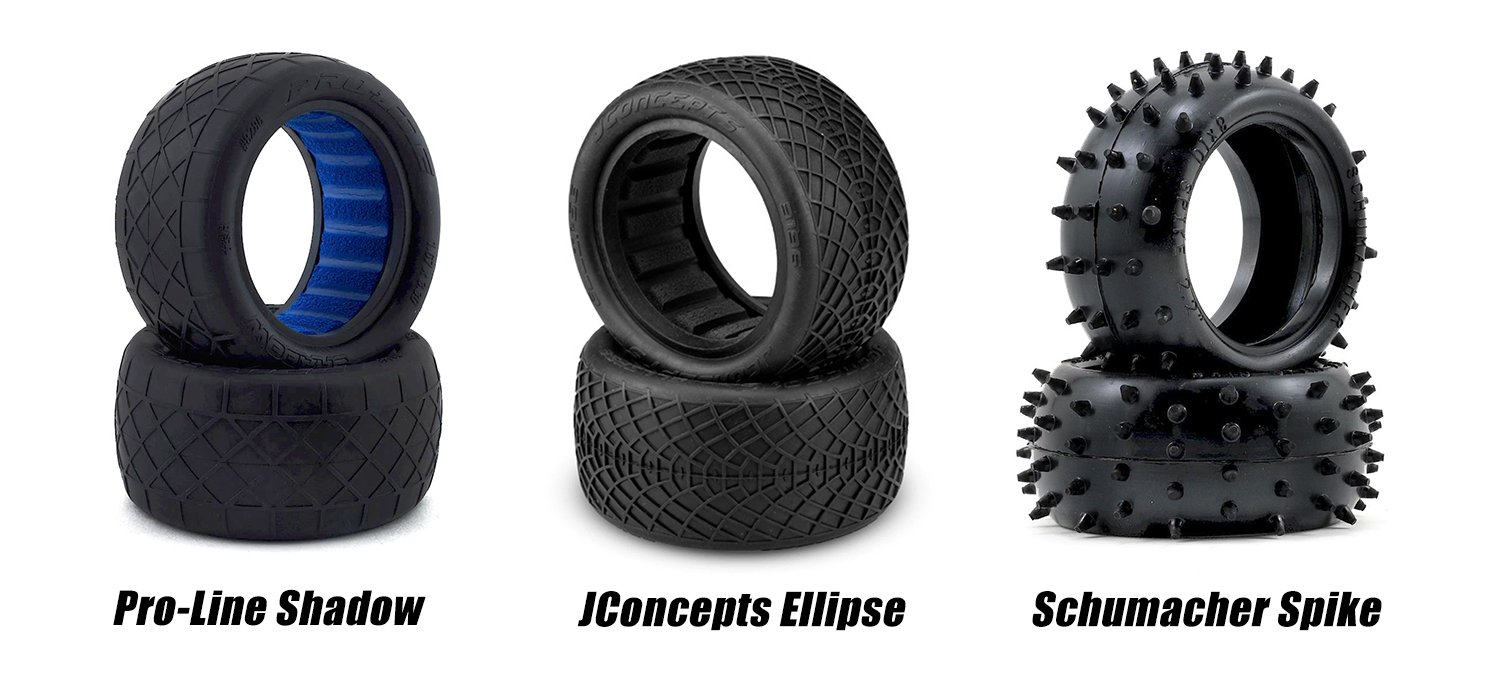
In the competition-buggy tire category, American manufacturers Pro-Line and JConcepts focus on low-profile tread designs for clay and AstroTurf tracks since that’s what we typically race on here in the states. However, UK-based Schumacher also covers those bases and offers spikey treads for racing on natural grass, as common in Europe.
Dirt oval racers may choose to run the same tires buggy racers choose or oval-specific treads.
Shopping tires at AMain is easy. To narrow your off-road RC tires and wheels choices, simply click through the product filter on the left of the category page for the brand, size, compound, and more.

